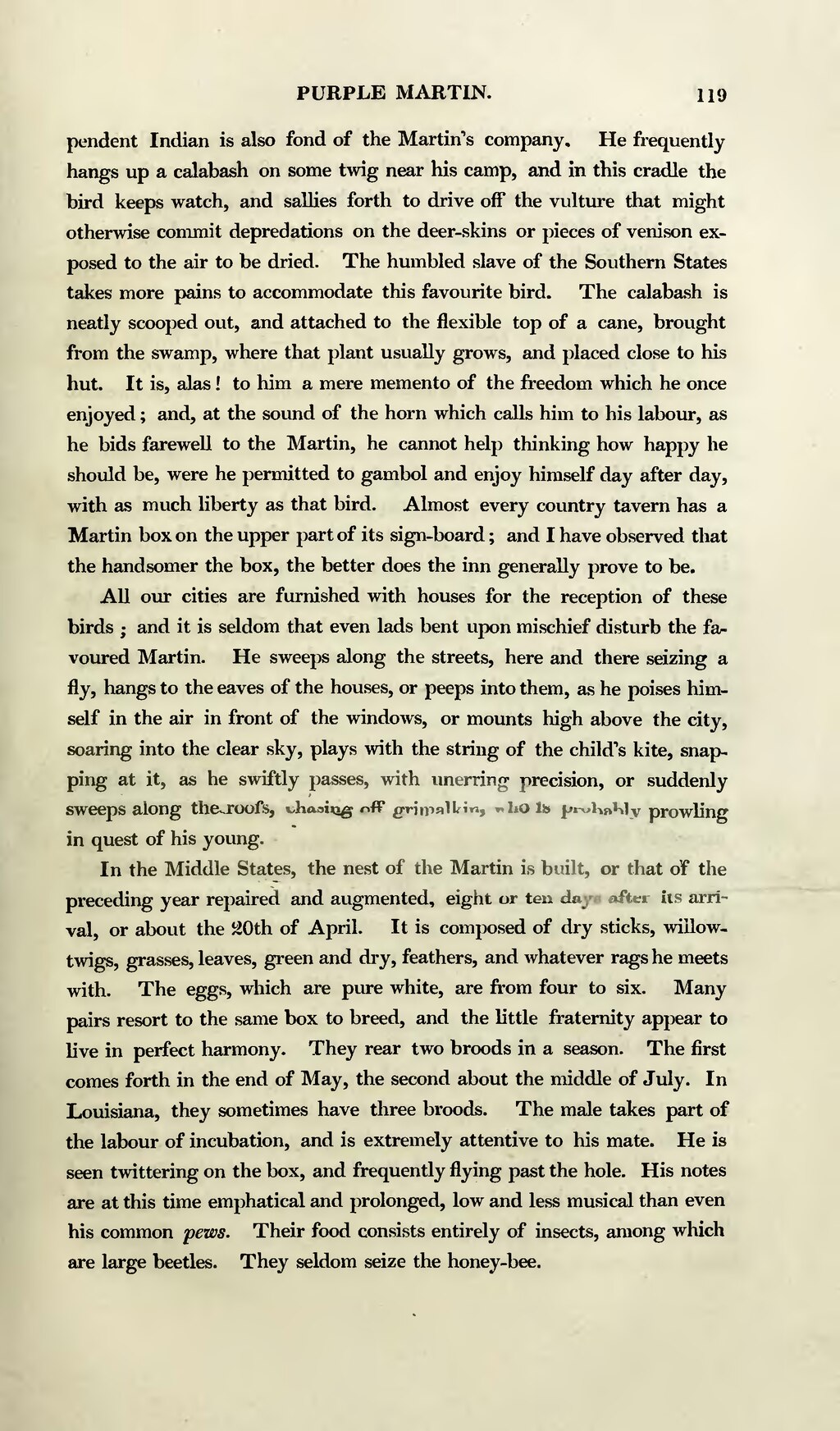pendent Indian is also fond of the Martin's company. He frequently hangs up a calabash on some twig near his camp, and in this cradle the bird keeps watch, and sallies forth to drive off the vulture that might otherwise commit depredations on the deer-skins or pieces of venison exposed to the air to be dried. The humbled slave of the Southern States takes more pains to accommodate this favourite bird. The calabash is neatly scooped out, and attached to the flexible top of a cane, brought from the swamp, where that plant usually grows, and placed close to his hut. It is, alas! to him a mere memento of the freedom which he once enjoyed; and, at the sound of the horn which calls him to his labour, as he bids farewell to the Martin, he cannot help thinking how happy he should be, were he permitted to gambol and enjoy himself day after day, with as much liberty as that bird. Almost every country tavern has a Martin box on the upper part of its sign-board; and I have observed that the handsomer the box, the better does the inn generally prove to be.
All our cities are furnished with houses for the reception of these birds; and it is seldom that even lads bent upon mischief disturb the favoured Martin. He sweeps along the streets, here and there seizing a fly, hangs to the eaves of the houses, or peeps into them, as he poises himself in the air in front of the windows, or mounts high above the city, soaring into the clear sky, plays with the string of the child's kite, snapping at it, as he swiftly passes, with unerring precision, or suddenly sweeps along the roofs, chasing off grumalkin, who is prowling in quest of his young.
In the Middle States, the nest of the Martin is built, or that of the preceding year repaired and augmented, eight or ten days after its arrival, or about the 20th of April. It is composed of dry sticks, willow-twigs, grasses, leaves, green and dry, feathers, and whatever rags he meets with. The eggs, which are pure white, are from four to six. Many pairs resort to the same box to breed, and the little fraternity appear to live in perfect harmony. They rear two broods in a season. The first comes forth in the end of May, the second about the middle of July. In Louisiana, they sometimes have three broods. The male takes part of the labour of incubation, and is extremely attentive to his mate. He is seen twittering on the box, and frequently flying past the hole. His notes are at this time emphatical and prolonged, low and less musical than even his common pews. Their food consists entirely of insects, among which are large beetles. They seldom seize the honey-bee.
